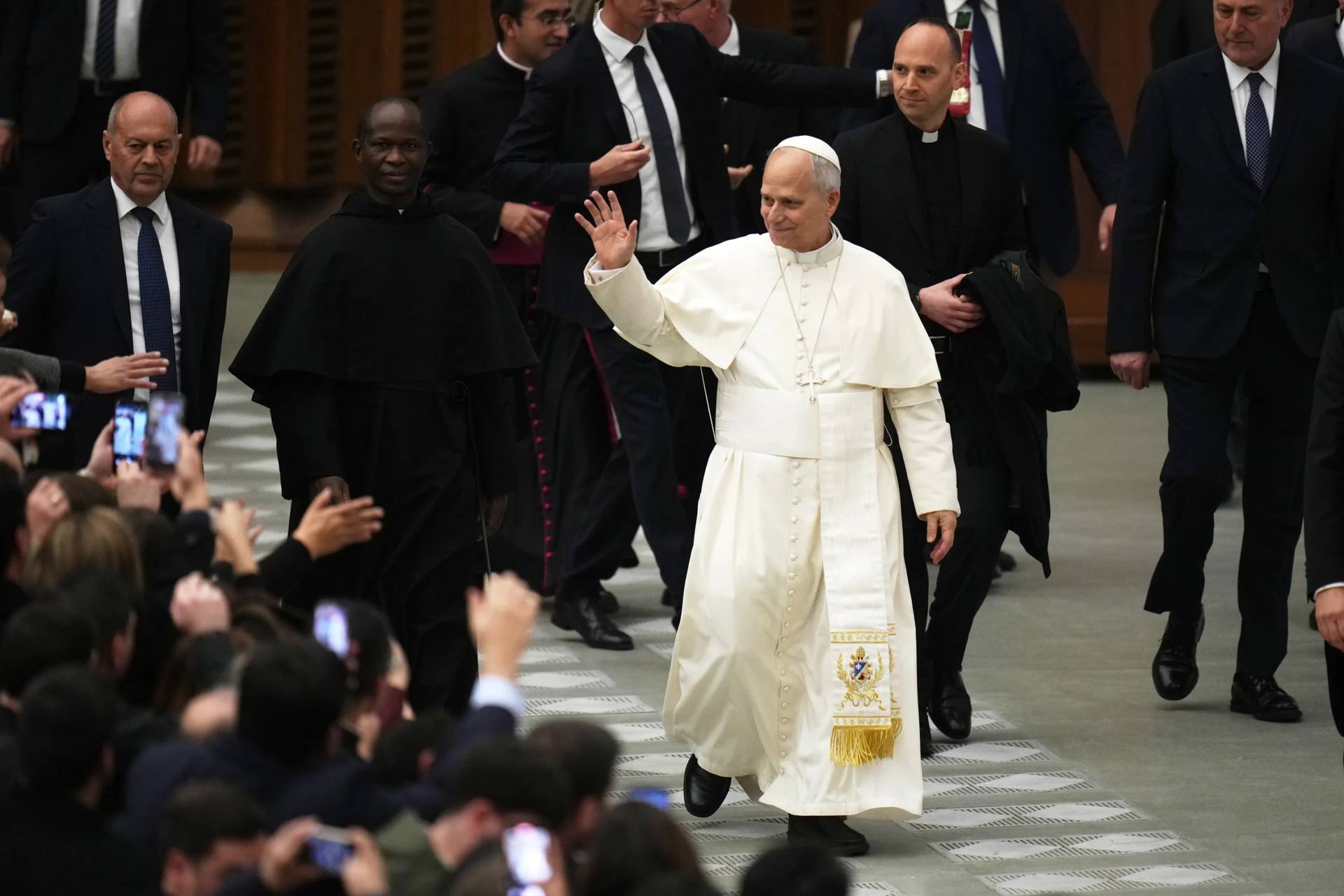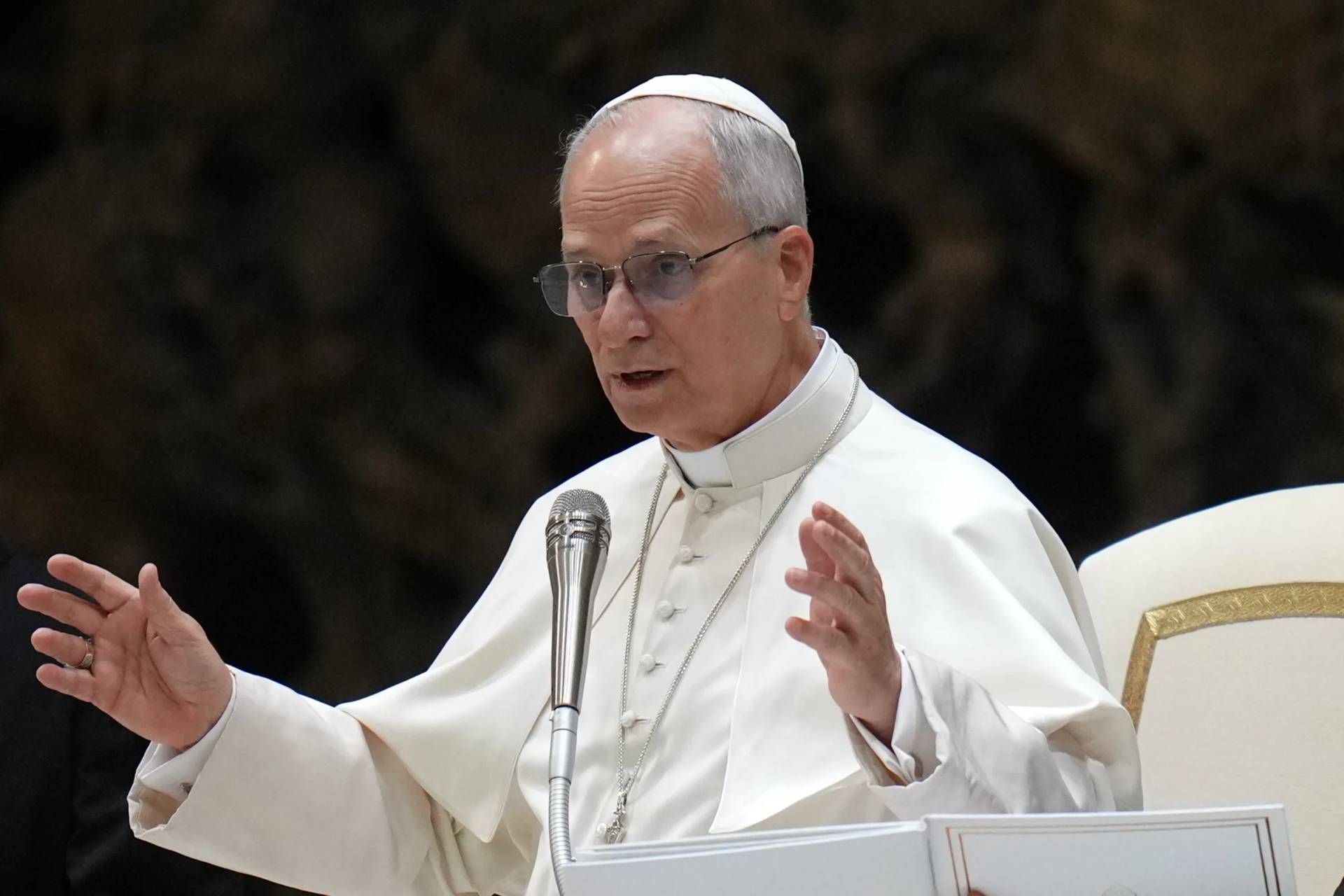Though not expected to be a bombshell like the last one, Pope Francis is set to release a new document in the form of an “apostolic exhortation” on Monday, focusing on the call to holiness in the contemporary world.
The unveiling of Gaudete et Exsultate (“Rejoice and be glad”), subtitled “On the call to holiness in the contemporary world” will take place on April 9 at noon Rome time.
It will be presented at a news conference led by Bishop Angelo De Donatis, the vicar general of Rome, and two laypersons: Gianni Valente, an Italian journalist; and Paola Bignardi, former president of Catholic Action in Italy.
Francis’s last apostolic exhortation was Amoris Laetitia in 2016, which, with its cautious opening to Communion for divorced and civilly remarried Catholics, set off a controversy that continues to echo to this day. No one expects the new document to trigger the same type of reaction – but Francis is, of course, a pope of surprises, so stay tuned.
Here is what you need to know – and what little we know so far – about the document.
Literary genre: Apostolic Exhortation
Popes, like many global leaders, are used to giving speeches, preparing messages for relevant holidays, and addressing major global powers such as the United Nations General Assembly. They might even tick off an autobiography before their term is over.
Yet, few leaders are expected to write in a more extensive and in-depth manner as the leader of the Catholic Church: Apostolic constitutions, apostolic letters or exhortations, encyclicals, motu proprios, and joint statements by the pope and another religious leader, are all part of the papal repertoire.
Some experts on such matters put apostolic exhortations third in the rank of papal documents, after apostolic constitutions and encyclicals. Often, they’re written following a gathering of bishops, known as a synod – but not always, as will be the case with Gaudete et Exsultate.
According to the Vatican’s website, the first apostolic exhortation of modern times was Haerent Animo, written by Pope Pius X, and published in August 4, 1908. Addressed to Catholic clergy on the occasion of the Golden Jubilee of his priesthood, it reportedly was written entirety in his own hand in the space of some weeks.
Since then, most popes have released apostolic exhortations, with the exception of John Paul I, who reigned for only 33 days. Due to the longevity of his papacy, the most prolific was St. Pope John Paul II, who wrote 15 exhortations on various topics, from the family (Familiaris Consortio, 1981) to the situation of the Church on each continent.
With four such documents, Pope emeritus Benedict XVI had an average similar to the pace Francis is setting: One every two years, give or take a few months.
Francis’s previous Apostolic Exhortations
Francis’s Gaudete et Exsutate will be his third apostolic exhortation, after Evangelii Gaudium, widely considered the roadmap of this pontificate, and Amoris Laetitia.
Evangelii Gaudium, also known as the ‘Joy of the Gospel’ in English, was released on Nov. 24, 2013, and was addressed to “the bishops, the clergy, consecrated persons and the lay faithful” on the proclamation of the Gospel in the world today. It touches on many of the central issues of his pontificate, from the obligations Christians have to the poor to a call for an “ecclesiastical renewal which cannot be deferred.”
Amoris Laetitia, was released March 19, 2016, addressed to “bishops, priests and deacons, consecrated persons, Christian married couples and all the lay faithful,” and is focused on love in the family.
In it, quoting extensively from conferences of Catholic bishops from around the world, Francis touches on every issue concerning what he calls the “Christian proclamation on the family:” From immigration to gender ideology, to the challenge of dialogue within families and the need for stronger marriage preparation and greater support for couples just starting out.
On sainthood in the ordinary world
The first Vatican insider to speak about the new document in public was Honduran Cardinal Oscar Rodriguez Maradiaga, who did so in early March, at the presentation of a book on the pope held in Rome. The prelate, who coordinates the group of nine cardinals who advise the pope on matters of Church reform, said that he’d heard about a document on this topic being prepared.
According to long-time Vatican watcher Italian Andrea Tornielli, it’s plausible to say that it was signed on March 19, the feast of St. Joseph and close to the fifth anniversary of the inauguration of Francis’s pontificate.
Though the Holy See reserves the right to formally recognize a specific person as a saint, the Catholic Church calls all women and men to sainthood, something that was particularly stressed in the Second Vatican Council document Lumen Gentium, which outlined what is known as the “universal call to holiness.”
Like every modern pope, Francis has spoken about the call to sainthood on numerous occasions – most notably, perhaps, during a Wednesday General Audience in Rome’s St. Peter’s Square on Nov. 19, 2014, when he addressed the universal vocation to holiness.
“Sanctity is not something we can procure for ourselves, that we can obtain by our own qualities and abilities,” he said. “Sanctity is a gift, it is a gift granted to us by the Lord Jesus, when He takes us to Himself and clothes us in Himself, He makes us like Him.”
Sanctity, he continued, “is not as a prerogative of the few” but a gift offered to all.
To be a saint, the pope said, “there is no need to be bishops, priests or religious,” nor to lead a life dedicated exclusively to prayer.
Everyone is called to sainthood, Francis insisted, regardless of their life status, giving a few examples.
“Are you consecrated? — Be a saint by living out your donation and your ministry with joy,” he said. “Are you married? — Be a saint by loving and taking care of your husband or your wife, as Christ did for the Church. Are you an unmarried baptized person? — Be a saint by carrying out your work with honesty and competence and by offering time in the service of your brothers and sisters.”













